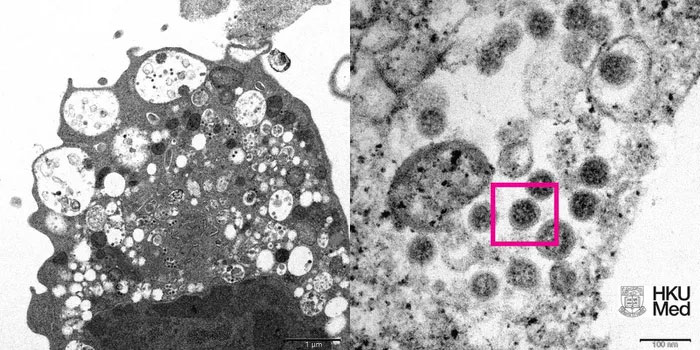On December 8, scientists at the University of Hong Kong unveiled the first images of the Omicron variant under an electron microscope.

Image of the Omicron variant of SARS-CoV-2 virus under an electron microscope. (Photo: University of Hong Kong)
According to Sputnik (Russia), medical experts, including pathologists and virologists, captured electron microscope images of monkey kidney cells (Vero E6) after the animal was infected with the Omicron variant. Recently, they published images of this variant at both low and high magnifications.
The researchers explained that at low magnification, the images showed damaged cells with swollen vesicles containing small black virus particles. At high magnification, the images revealed clusters of round virus particles with spikes on their surfaces.
Reportedly, researchers from the Department of Microbiology at the University of Hong Kong have sought to isolate Omicron from clinical specimen samples, which will enable the scientific community to develop and produce vaccines against the new variant.
The Omicron variant was first detected in South Africa in late November. This new variant contains numerous unprecedented mutations, approximately 50 mutations, including 32 located in the spike protein, the part that helps the virus enter cells. This has raised concerns among scientists that Omicron may evade the body’s immune response and spread more easily.


















































